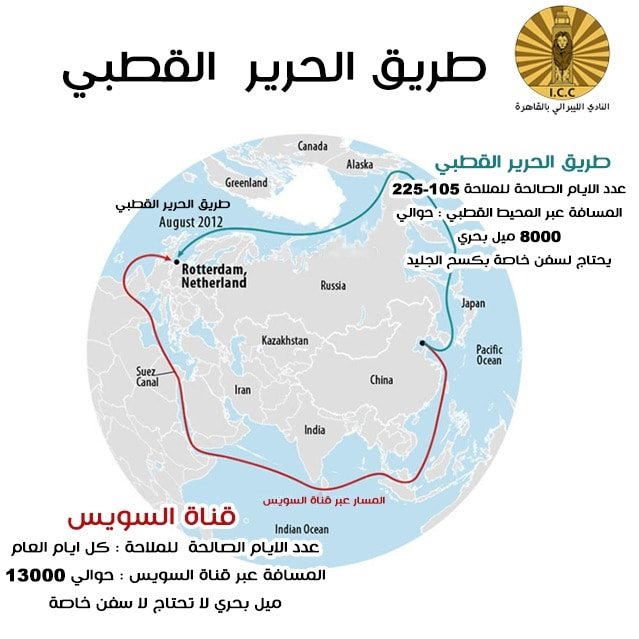We continue talking about alternative routes to the Suez Canal and review together the second route
Arctic Silk Road
Since the beginning of the 2000s, as the pace of ice melting accelerated as a result of climate change, Russia began to exploit the shipping route across the Polar Ocean to connect Russia and Europe. In 2013, China joined as an observer member of the Polar Council, the organization concerned with managing the Arctic and the Arctic Circle. At the end of 2017, during the visit of Russian Prime Minister Dmitry Medvedev, both the Chinese and Russian Prime Ministers announced their support for the #Polar_SilkRoad, which is a navigation path that begins from China, passing through the Arctic Ocean and reaching the North Sea. If this path is developed, the distance from China to Europe will be shortened by half the time compared to them. On the route through the Suez Canal.
The Polar Silk Road, or the navigation path through the Polar Ocean and the North Sea, shortens the distance between China and Europe by about half compared to the path through the Suez Canal. However, there are several natural, technical, and financial obstacles facing this path, the first of which is that it is not navigable throughout the year, but can be navigated during an extended period. From 105-225 days a year, in addition to ships needing icebreakers to open the path in front of them. Above all, not all ships are suitable for sailing in icy waters, which means the need for special ships to navigate in icy waters. Therefore, it is practically impossible to rely on the Polar Silk Road, but it will be There is a complex route that requires that some goods be shipped on ships suitable for ice navigation throughout the period in which navigation is possible in the Polar Ocean, and the rest of the period is through the Suez Canal.
Therefore, the cost in the case of the combined route will be 10% less than the usual route through the Suez Canal, according to a research paper issued in 2013 issued by researchers at the Japan International Cooperation Agency and Hokkaido University. Therefore, despite the impossibility of relying on the Polar Silk Road only, there is a threat to the volume of navigation. Transit of the Suez Canal in the future.


